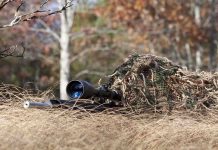
Japanese beetles are systematically destroying American crops and spreading across the nation, threatening food security while costing taxpayers hundreds of millions in damage and eradication efforts.
At a Glance
- Japanese beetles have spread to 41 U.S. states since 1916, causing hundreds of millions in annual agricultural damage
- The invasive species feeds on over 300 plant varieties including corn, soybeans, grapes, and fruit trees
- Idaho successfully eradicated the beetle through intensive multi-year efforts, proving early intervention works
- Europe faces a growing invasion after beetles arrived in Italy in 2014 and spread to Switzerland
- The beetles hitchhike on vehicles, planes, and nursery stock, making containment extremely difficult
America Under Siege by Foreign Invaders
The Japanese beetle invasion represents one of agriculture’s most persistent threats since these destructive pests first arrived at a New Jersey nursery in 1916. Originally from Japan, northern China, and the Russian Far East, these beetles remained controlled in their native habitat by natural predators. However, American soil provided the perfect storm for an ecological disaster with no natural controls to keep populations in check.
These ravenous insects devour everything in sight, attacking crops, ornamental plants, and wild vegetation with equal ferocity. Farmers across 41 states now battle this relentless enemy that threatens corn, soybeans, grapes, and fruit trees. The beetles’ adaptability and broad appetite make them nearly unstoppable once established in an area.
Economic Devastation Spreads Coast to Coast
The financial toll reaches staggering proportions as agricultural losses mount year after year. Farmers face the double burden of crop destruction and expensive control measures, while taxpayers fund government eradication programs. Local communities try their best to protect their gardens, parks, and landscapes that suffer repeated attacks from these foreign invaders.
The nursery and horticulture industry bears additional costs through increased regulations and inspection requirements. These beetles spread through infested nursery stock and soil, forcing businesses to implement costly monitoring and treatment protocols. The ripple effects touch every corner of American agriculture, from small family farms to large commercial operations.
Idaho Shows Eradication Is Possible
The Idaho State Department of Agriculture achieved a remarkable victory by completely eradicating Japanese beetles from Boise through intensive multi-year efforts. No beetles were detected from 2019 to 2021, proving that early intervention and sustained commitment can eliminate these pests before they establish permanent populations.
This success story demonstrates that government agencies can effectively protect American agriculture when they act decisively. The Idaho model requires immediate detection, rapid response, and coordinated efforts between federal and state authorities. However, once populations become established, eradication becomes exponentially more difficult and expensive.
International Threat Continues Growing
Europe now faces the same devastating invasion that America has endured for over a century. The beetles arrived in Italy in 2014 and quickly spread to Switzerland, prompting coordinated European Union monitoring and control programs. These pests travel easily on aircraft and vehicles, making international containment nearly impossible.
The global spread highlights how modern transportation networks facilitate biological invasions. Trade in plants and soil provides perfect pathways for these destructive beetles to establish new footholds. Each new invasion requires massive resources and ongoing vigilance to prevent further spread.
Sources:
Woodstock History Center – A Plague of Beetles
Idaho Invasive Species – Cooperative Agricultural Pest Surveys
UC Riverside Center for Invasive Species Research – Japanese Beetle
Waldwissen – Biology and Control of the Invasive Japanese Beetle
Government of Canada – Japanese Beetle Fact Sheet







